Weeping cherry trees, with their powder-pink blossoms and long, trailing branches, add a touch of magic to any garden. However, those long branches sometimes require extra-special attention, such as pruning. If you have a weeping cherry tree in need of pruning, you might be wondering if you can prune it during the summer. Don't worry—we've done the research and will answer your question right here in this article.
The best time to prune a weeping cherry tree is immediately after the last bud falls in early summer but before the leaves are fully grown. Since spring-flowering trees bud in the fall, pruning at this time ensures that you won't accidentally cut off any new buds. You should prune a weeping cherry tree once every few years to maintain its umbrella-like shape. Finally, you should trim the branches while they're still young and small.
Keep reading to find out more about pruning your weeping cherry tree. We'll answer some of the most common questions plus share a step-by-step guide to pruning. So, let's get started!
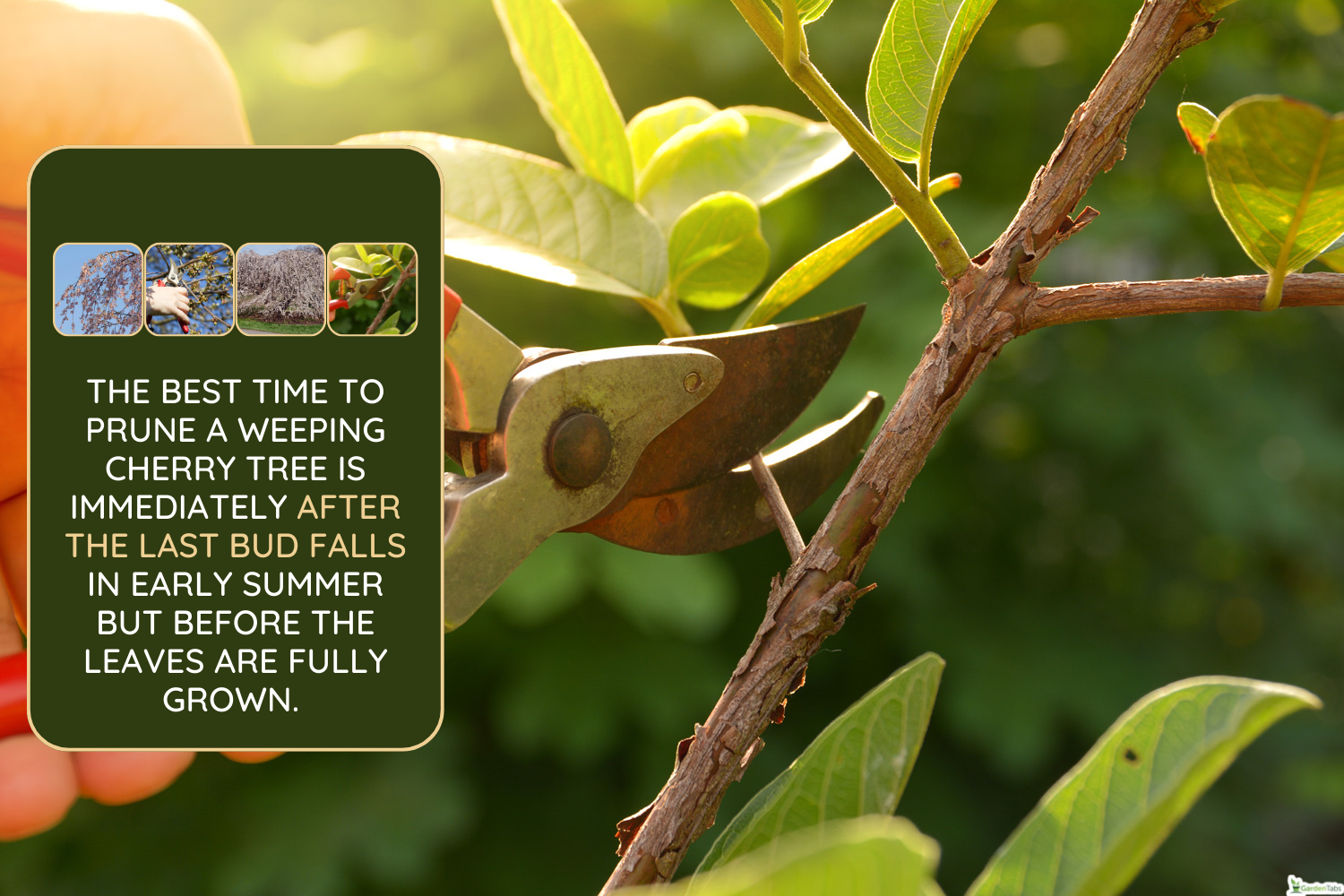
Can I Prune A Weeping Cherry Tree In The Summer?
The perfect time to prune your weeping cherry tree is directly after your tree finishes blooming in early summer. You should prune most trees while they're dormant in fall or winter, but spring-flowering trees require different care.
This is because they bud on old growth in the fall, and if you cut off the buds, you won't have flowers in the spring!
Make sure to prune your tree right after the blossoms fall, because you'll want to do it before all its leaves reach maturity. That allows you to clearly see the tree's outline and avoid causing the tree too much stress.
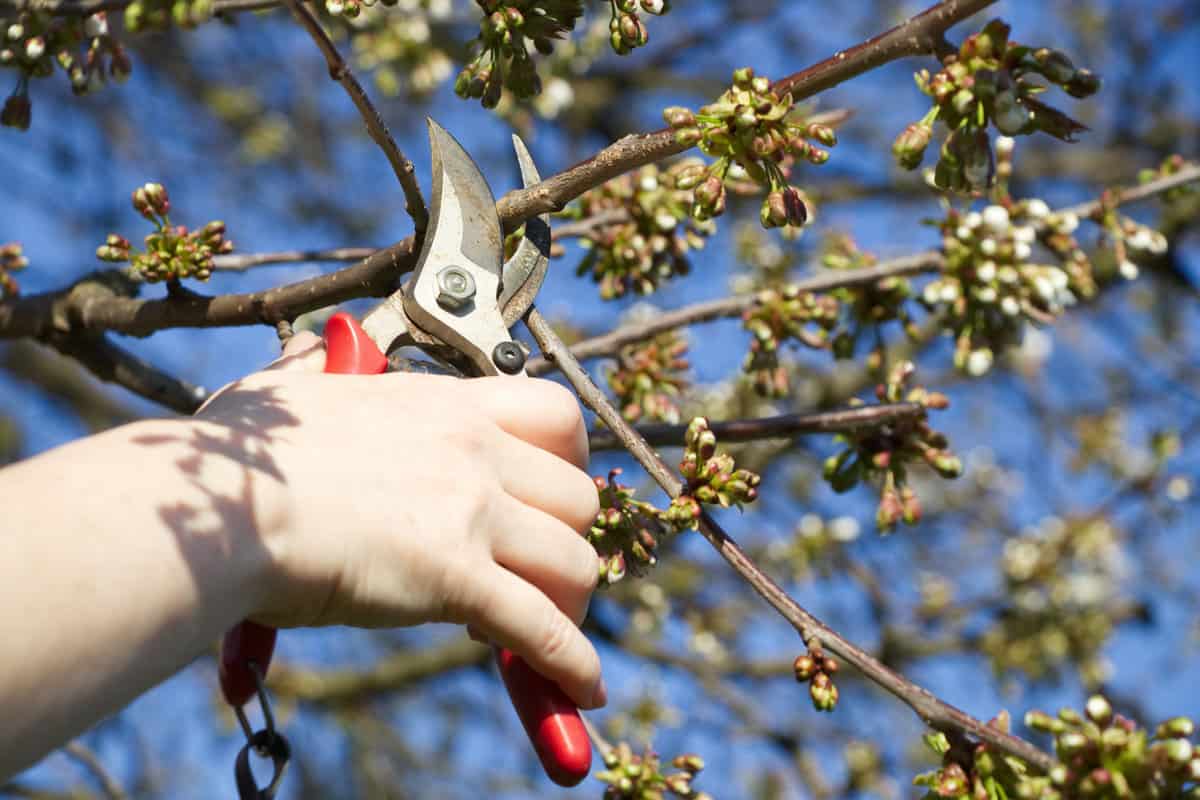
How To Prune A Weeping Cherry Tree
Before pruning your weeping cherry tree, you'll need to sterilize your tools. Do this by soaking a rag with rubbing alcohol and wiping the blades, then rinsing with water and letting the tool air dry. This will prevent the spreading of disease from other trees or plants.
To get the best results from pruning, you need a sharp tool. Although a saw can work in a pinch, pruning shears are better.
These shears are a sharp, effective way to trim your weeping cherry tree.
Click here to view them on Amazon.
As you prune, there are a few things to keep in mind. First, focus on trimming smaller branches rather than large, mature growth. Next, try to keep the tree's overall shape in mind. Step back and look at the whole tree frequently as you prune, and don't forget to envision it with all of its leaves.
What You'll Need
- Ladder
- Sharp pruning shears or saw
- Rubbing alcohol
- Rag
Remove Suckers
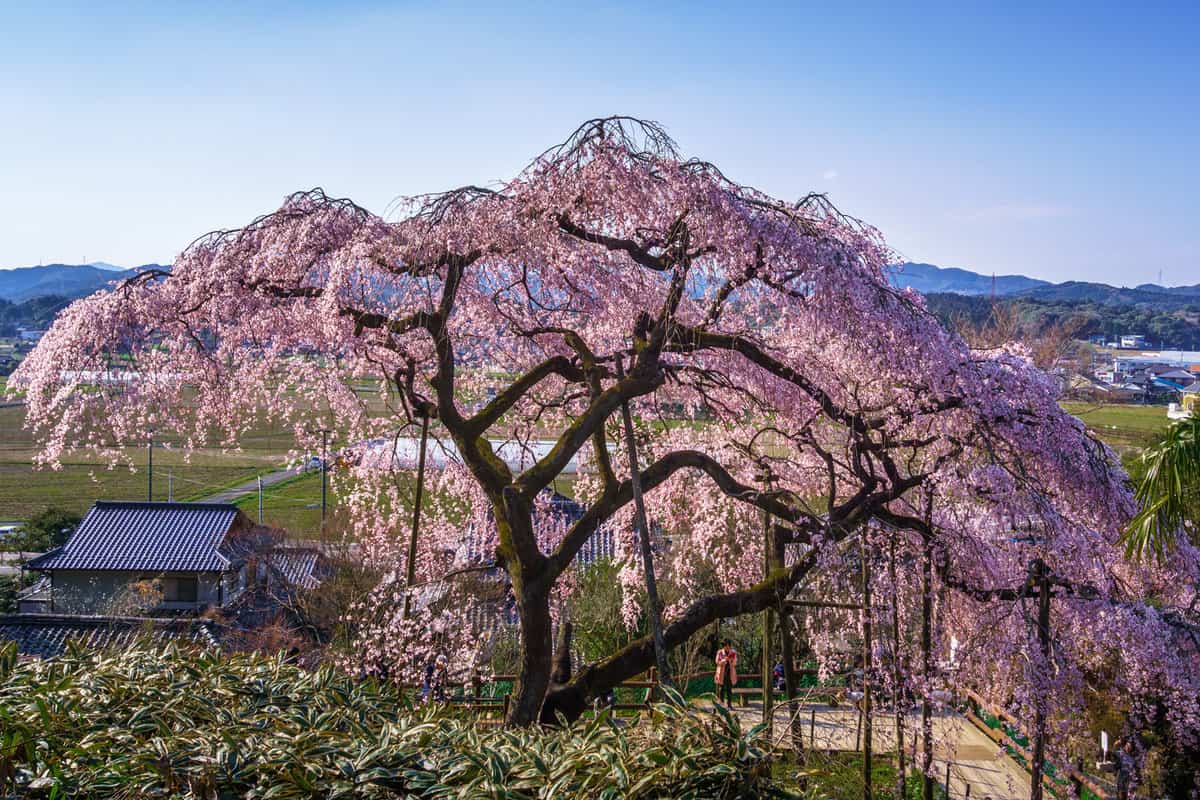
"Suckers" are useless shoots that drain resources from the rest of the tree. They're usually found on the trunk, growing in the ground at the base of the tree or sprouting from the branches but pointing back toward the trunk.
On the tree, cut them off just outside the place where the branch meets the trunk or other branch. On the ground, cut them off as close to the ground as possible, but avoid damaging the roots.
Remove Dead Branches
First, inspect your tree for dead or dying branches. If you're unsure, a quick and easy way to tell if a branch is dead is by scratching the bark.
If the layer just below the bark is green, the branch is alive and you should keep it. However, if it's dry and brown, the branch is dead and can be pruned. Some other telltale signs of dead or dying branches include dry or missing leaves and cracked or broken branches.
It's safe to prune away any dead or dying branches, and you can prune them all the way back to the live wood. To do this, use your pruning shears or saw to remove the branch with a single clean cut close to the nearest live branch.
If any branches appear diseased, they'll require special care. First, cut the diseased branch off about 6 inches below the joint. This ensures that you're removing all of the diseased parts.
Then, thoroughly clean your shears or saw with rubbing alcohol before pruning the rest of the tree. Last, discard the diseased branches by bagging them securely and throwing them in the trash.
If you want to learn more about the diseases or other problems weeping cherry trees sometimes face, check out our article Why Is My Weeping Cherry Tree Dying? [And What To Do]
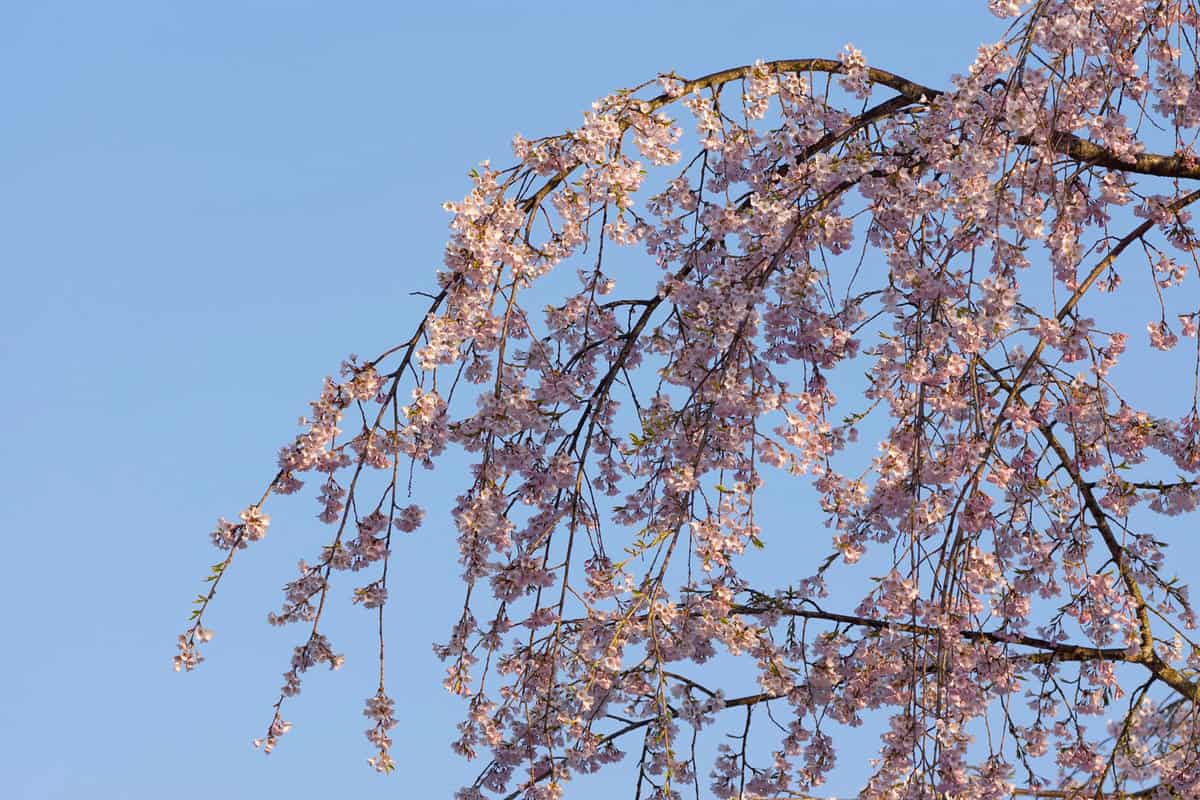
Shape Your Tree
A weeping cherry tree's main appeal is in its graceful, drooping shape, so your pruning should help maintain that silhouette.
Depending on your preference, prune the trailing branches to about 6 inches from the ground, or let them extend all the way down. Either way, you should trim off any damaged or broken branch endings.
You'll also want to preserve the umbrella-like shape at the top of the tree. This varies slightly between natural and grafted weeping cherry trees, so we'll discuss what to do if you have a grafted tree later in this article.
However, if you have a natural weeping cherry tree, leave alone any branches growing straight up from the center of the tree. In time, they'll start curving toward the ground with the rest of the branches.

How Should I Prune A Grafted Weeping Cherry Tree?
You can recognize a grafted tree by a visible bump on the trunk about 4 or 5 feet above the ground. This is where the upright cherry tree's trunk was sawed off and the weeping cherry tree's branches were grafted. When done correctly, grafting does not harm trees and is the way many weeping cherry trees are produced.
On a grafted cherry tree, branches from the center of the tree grow straight up because they come from the original, upright cherry tree. This means that to preserve the branch's drooping quality, you'll need to prune off these branches. Trim them off close to the base so they won't interfere with your tree's silhouette.

How Much Can You Prune A Weeping Cherry Tree?
To preserve your weeping cherry tree's distinctive shape, you should prune with a light touch. However, there might be times when you need to reduce your tree's size.
For the tree's safety, prune to no more than two-thirds of the branch's length. Just be sure to leave the branches long enough to preserve the trailing appearance.
If your weeping cherry tree has a crowded, congested look, you may want to thin out some of the branches. Focus on pruning branches in the tree's interior, and only remove enough to achieve a more spacious look.
Be sure to step back often to check the tree's overall appearance and remove a little at a time. Remember, it's easy to remove more, but you can't reattach branches if you prune too much!
If you're interested in learning more about the dangers of over-pruning, check out our article Can You Kill A Fruit Tree By Over Pruning?
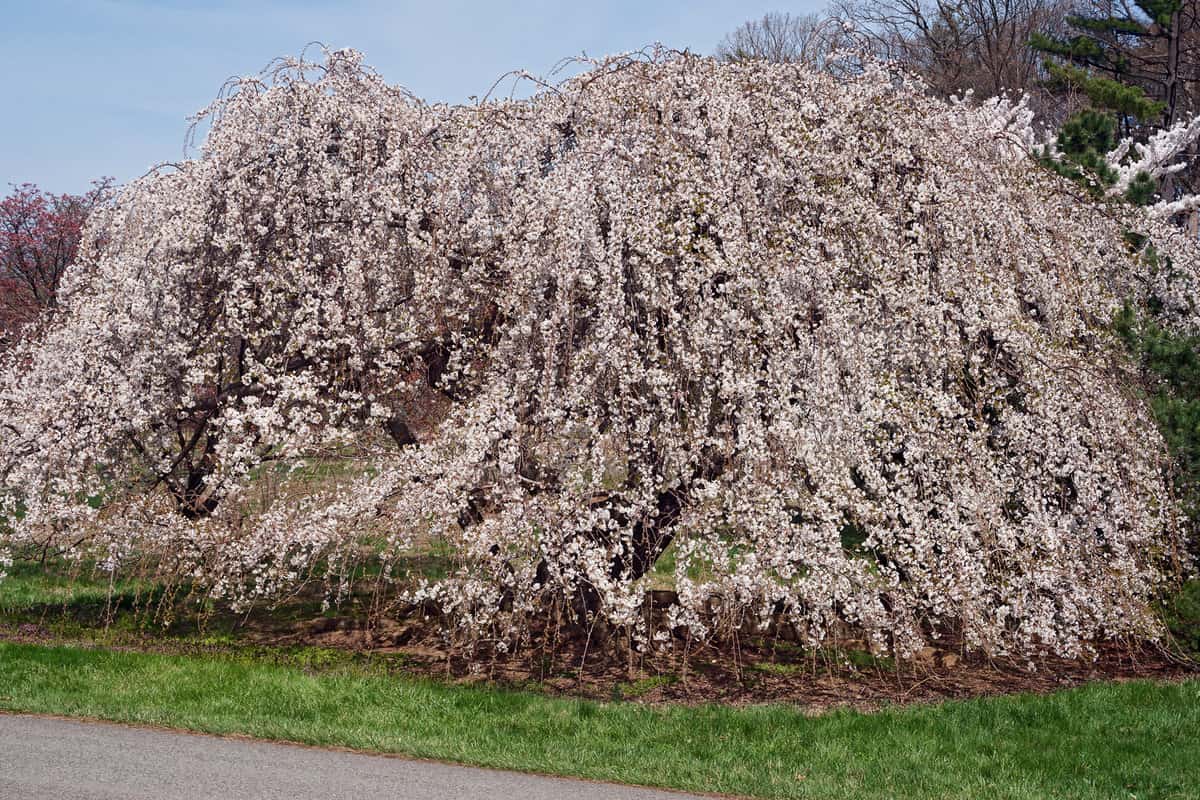
Should A Weeping Cherry Tree's Branches Touch The Ground?
The answer to this question is mostly a matter of personal preference, but yes, your weeping cherry tree's branches can touch the ground.
Some prefer the look of a weeping cherry tree with branches that hover a few inches or feet above the ground, and this is what happens naturally with most young trees. However, a more mature tree can grow branches that sweep the ground.
If you choose to let your weeping cherry tree's branches trail on the ground, monitor them for rot. This is most likely to happen if the ground around your tree is damp. If you notice the tree's branches beginning to rot or show any signs of damage, simply trim them so they extend to about 6 inches above the ground.
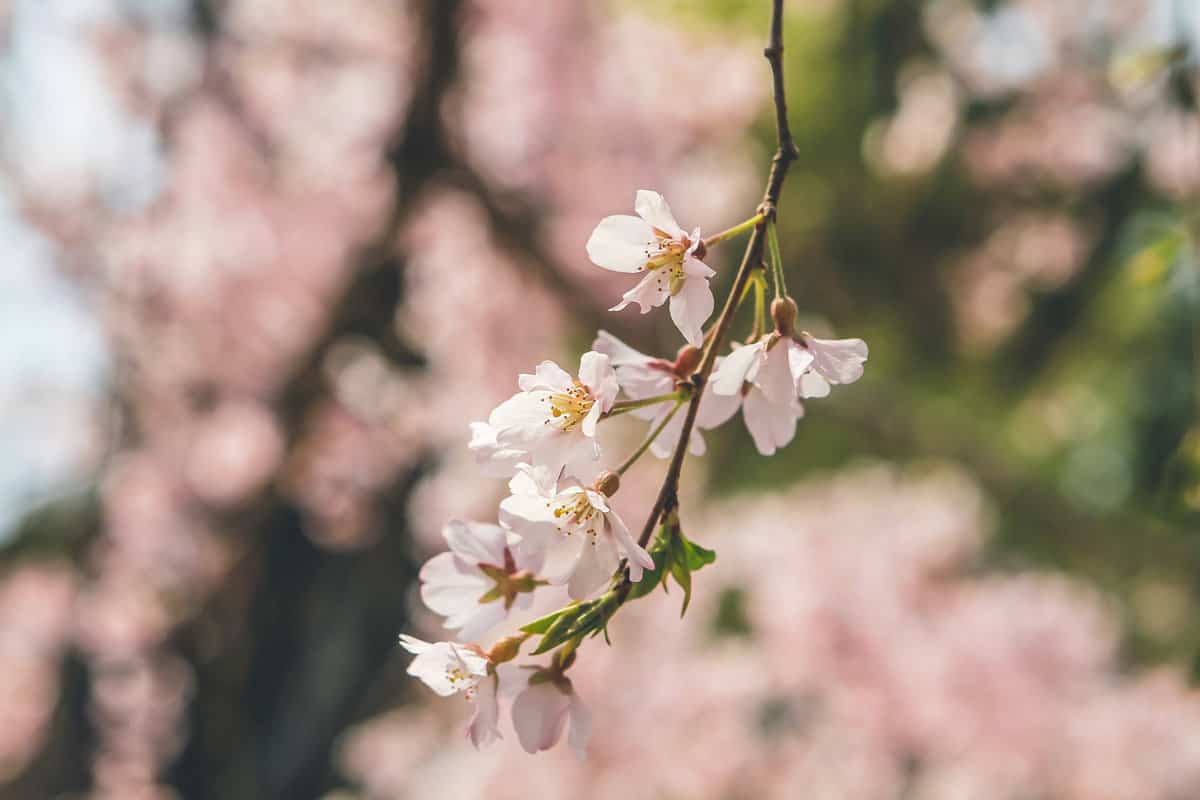
In Closing
Early summer is a great time to prune a weeping cherry tree. You should aim for just after the last blossoms fall but before the leaves reach full maturity.
If you have a grafted weeping cherry tree, you'll want to trim any upright branches growing from the middle of a tree, but you can let them grow on a natural tree. Finally, prune lightly to preserve the tree's shape, and focus on removing small, dead, dying, or diseased branches.

